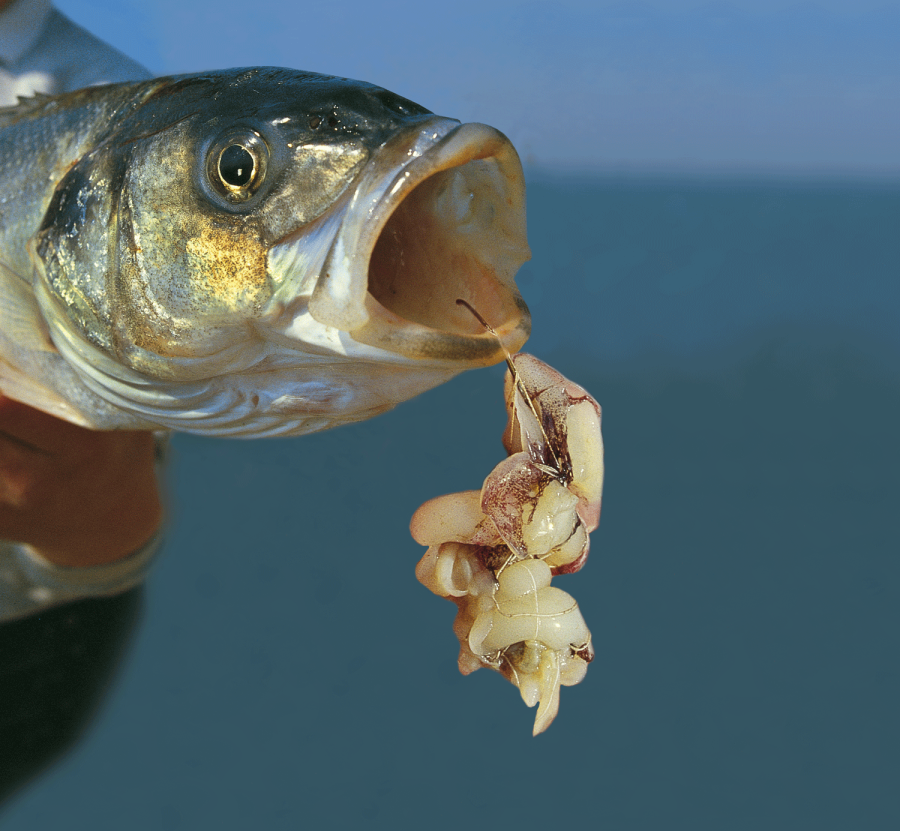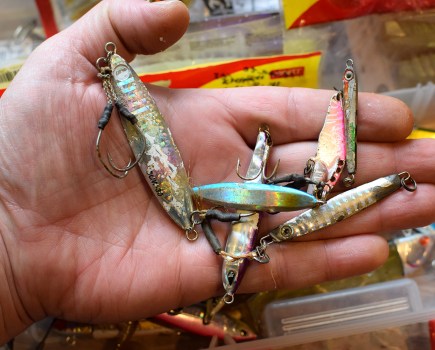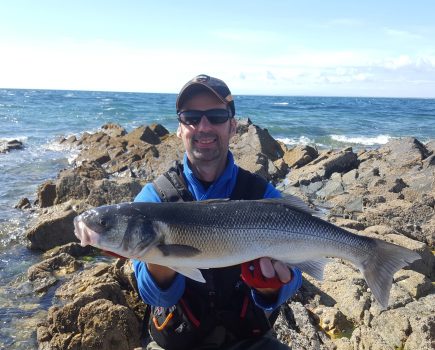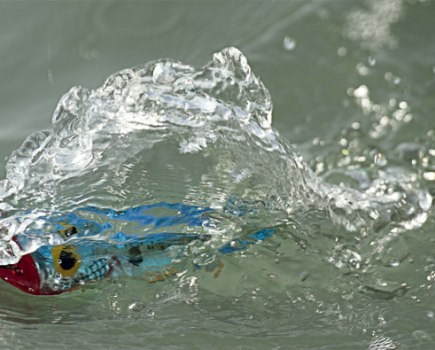Squid is my favourite bait for bass, says dinghy angler Steve Mills, but he warns other scavengers, like cod and after-dark conger eels, also a have a taste for this cheap and easy-to-use sea fishing bait…
The early autumn period between the end of September and the beginning of November marks an important watershed for South Coast boat anglers. The summer species start to move away as sea temperatures gradually fall; it seems winter in the Med is more appealing!
Most notable among the species that depart the eastern and central inshore waters is the mackerel. I say most notably not because the mackerel will be missed for its sporting credentials but for it is a reliable and essential source of fresh bait.
Anglers in the South West can probably continue to rely on mackerel stocks well into the autumn, but off Hampshire we start to dip into the freezer from mid-September onwards.
Squid then inevitably emerges as the single most important autumn and winter bait for the remaining predatory species. To be honest I would definitely prefer to offer fresh, frozen, white calamari squid than home frozen mackerel that clearly loses much of its appeal compared to the pulling power of fresh bait if it isn’t instantly blast frozen.
What’s more those predators – bass, cod, congers and rays – appear to accept squid with gay abandon. In recent seasons Solent cod haven’t arrived in consistent numbers until the end of October, so anglers have to decide what to target and bass are always high on the list.
While the smaller shoaling bass continue to chase fry and whitebait, the larger fish of 4lb or more become a target for anchored boat sport.
These larger bass are opportunistic feeders. It is difficult to think of a bait or technique that does not catch bass at some point in the year. They move seamlessly from one naturally available food source to another.
Once the sandeels and mackerel have started to disappear for the year they simply look elsewhere. My impression is that autumn bass are more prepared to scavenge and widen their search areas. It is to our advantage that bass are happy to accept a bait that conveniently comes out of the freezer and does not have to be dug, collected or caught and which doesn’t usually cost an arm and a leg.
One thing it can be difficult to do is to exclusively or specifically target bass. They are not the only predator with an appetite.
LIKELY BASS MARKS
So what sort of ground are you looking for? Key features that seem to attract these bigger bass are rock or reef marks or even boulders that are adjacent to some cleaner ground.
Bass like some rough stuff for protection and to escape the tide, plus some mixed open ground close by for scavenging those small fish and crabs that now make up their diet.
I find these type of marks are usually in 40ft to 80ft of water. A chart, a good fish-finder and some local knowledge will help you find such likely bass-holding ground.
Hampshire anglers will recognise that marks like this can be found off Selsey, south east of Utopia, off Bembridge and can equally include vast tracts of the south coast of the Isle of Wight right through to and round the Needles.
WHEN TO FISH
Bass can consistently be taken during daylight but prospects improve after dark. However, this is where the trouble starts. The same conditions that suit the bass are just as attractive to conger eels or even cod.
In fact the problem is even bigger because these inshore autumnal congers are essentially nocturnal and they are busy fattening up in order to survive the winter.
Local marks that appear to be devoid of these eels during the day come alive with them after dark. A dozen up to 40lb can be possible from some marks and some can even be caught on dull overcast days. The only thing that recommends conger eels to me is a 40-pounder caught in the dark on 20lb-class gear can be fun.

TACKLE AND TACTICS
Bass tactics are straightforward. Choose rods and reels according to depth with a spring tide and 60ft of water needing 1lb of lead and maybe a 30lb-class rod. Go lighter if you can, but remember those eels. Braid mainline is standard; I use 30lb braid and a 40lb leader.
End tackle comprises a running leger with a 5ft trace to the Pennell rigged squid bait presented on a pair of size 6/0 hooks. Meaty hooks are unnecessary; I use chemically-sharpened hooks like Mustad Viking (wide gape) or Mustad Ultimate Bass.
Trace strength may depend on the roughness of the sea bed. There is no point in having the trace stronger than the leader. Each time you get stuck you will lose everything. Equally the trace takes some stick under these conditions so you cannot fish too light. Either increase the leader strength or try adding a stronger ‘biting’ length close to the hooks.
I like to present the hooks on a large loop. The top hook of the Pennell is simply threaded onto the loop so that it can slide between the fixed bottom hook and the loop knot. This prevents the top hook from sliding right up the trace and provides a double thickness to resist fish with teeth.
To bait up, thread the bottom hook through the squid a couple of times finally pushing the hook point through its head. Wind the shank of the top hook around the double thickness of the trace loop three or four times to hold the hook in place and impale the hook in the top of the bait.
I prefer to have hook points coming out from different sides of the bait to improve hooking potential. Bait size is according to squid size and I use two squid if they are less than 10cm in mantle length; these fish are hungry.
Both uptide and downtide techniques work well, particularly when the water is coloured. Bass will hit squid baits very hard and missed bites are inevitable if you leave the rod to look after itself. I prefer to hold a rod and make sure that the next bass stays on the hook.







